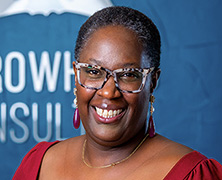Creating Light Bulb Moments
I would like to thank Profiles in Diversity Journal for recognizing me for this prestigious award. This resonates with me because my personal philosophy, “Prove them wrong,” came from my mom, who was full of incredible sayings. As I worried about how I was perceived or wondered about my ability, tackling those issues with the mentality that I will prove any negative thoughts or impressions wrong has been empowering for me. My mother’s advice to third-grade me has served me well.
I have committed myself to addressing equity, as I see it as the vehicle to ultimately achieving what is mentioned in the U.S. Constitution, equality. The pursuit of equity is a lofty goal, but one I am passionate about.
Women are generally underrepresented in leadership positions across corporate America and have been for centuries. Gender bias or sexism still operates in our workplaces. It mainly impacts women and girls, although sexism can affect anyone. If a man has previously held the role, gender bias hinders a female when applying for the same position because of who held it originally.
Gender bias and sexism lead directly to the “glass ceiling” issue for women. It’s not a myth, but a challenge we must overcome. Racial bias can also attach itself and compound this issue when you are a woman of color. The ceiling isn’t glass, it’s concrete, which makes being seen and valued even more difficult to achieve throughout your career. Just think about how the two things are different. Glass is strong, but it can be broken. You can see through it, knowing there’s something to work toward. Concrete is almost impossible to break through by yourself. Women of color don’t always see opportunities for career advancement. The concrete ceiling is often impossible to break through with no clear path to the next level.
What can women do to break through the glass ceiling or jackhammer through the concrete? I believe women don’t need to do more of anything. Companies need to develop programs that value the contributions and leadership capabilities of women as standard operating procedure. Through programs such as female affinity groups, employee resource groups, mentorship, sponsorship opportunities, and using data to uncover the gaps in female leadership roles, companies and organizations can create succession plans to ensure that women are not left out.
As this relates to diversity, equity, and inclusion, I lead with an approach that doesn’t devalue the thoughts of men or white people, but acknowledges that it will take us all to wrestle with the challenges of gender and racial inequality. Creating “light bulb” moments is what I am passionate about when I’m consulting or speaking at an event. If a person leaves thinking, “There is something I can do about these issues,” then I’ve done my job.







